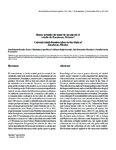
Please use this identifier to cite or link to this item:
http://ricaxcan.uaz.edu.mx/jspui/handle/20.500.11845/942Full metadata record
| DC Field | Value | Language |
|---|---|---|
| dc.contributor.other | 0000-0001-7861-4780 | es_ES |
| dc.contributor.other | https://orcid.org/0000-0001-7861-4780 | - |
| dc.coverage.spatial | Zacatecas, México | es_ES |
| dc.creator | Reveles Torres, Luis Roberto | - |
| dc.creator | Luna Flores, Maximino | - |
| dc.creator | Mejía Gurrola, Alfonso | - |
| dc.creator | Hernández Martínez, José | - |
| dc.creator | García Hernández, Serafín | - |
| dc.date.accessioned | 2019-04-08T18:27:32Z | - |
| dc.date.available | 2019-04-08T18:27:32Z | - |
| dc.date.issued | 2014-09 | - |
| dc.identifier | info:eu-repo/semantics/publishedVersion | es_ES |
| dc.identifier.issn | 2007-0934 | es_ES |
| dc.identifier.uri | http://ricaxcan.uaz.edu.mx/jspui/handle/20.500.11845/942 | - |
| dc.identifier.uri | https://doi.org/10.48779/5k0z-ck54 | - |
| dc.description | Knowledge of the current genetic diversity of rainfed native maize varieties is quite important for phenotypic characterization, conservation and breeding. In 2008, a collection of such varieties was made in the State of Zacatecas, with the main objective to evaluate their diversity. The collection was made in 36 municipalities (state 58) with the largest rainfed maize and covered the different ecological regions. Ear cob characteristics and grain were measured, and ecological data collection sites were taken. 166 samples were obtained; 97 were identified with one race and 69 with two; a total of eight races were identified (three less than decades ago). Like several years ago, Cónico Norteño race had the largest presence with 51.2%; followed by Ratón and Celaya breeds with 14.7% and 14%, respectively. The Cónico Norteño race was present in all regions, but specially in low rainfall areas (260-375 mm during the growing season), the rainy season is short (65-77 days) and the elevation varies between 1 900 and 2 350 m. Celaya and Ratón races also showed a wide dispersion. Over all, the collections of higher rainfall sites had higher number of kernels per row, ear diameter and cob, grain width and weight than the collections of sites with lower rainfall. Multivariate analysis applied to the measured variables generated seven groups of collections, observing a high influence of ecological characteristics in separating the groups. | es_ES |
| dc.description.abstract | El conocimiento de la diversidad genética actual de las variedades nativas de maíz de secano es importante para la caracterización fenotípica, conservación y mejoramiento genético. En el año 2008 se hizo una colecta de este tipo de variedades en el estado de Zacatecas, con el objetivo principal de evaluar su diversidad. La colecta se realizó en los 36 municipios (de 58 del estado) con mayor superficie de maíz de secano y abarcó las diferentes regiones ecológicas. Se midieron características de la mazorca y del grano, y se tomaron datos ecológicos de los sitios de colecta. Se obtuvieron 166 muestras; 97 se identificaron con una sola raza y 69 con dos; en total se identificaron ocho razas (tres menos que hace décadas). Al igual que hace varios años, la raza con mayor presencia fue Cónico Norteño con 51.2%; le siguieron las razas Ratón y Celaya con 14.7% y 14%, respectivamente. La raza Cónico Norteño estuvo presente en todas las regiones, pero en mayor abundancia donde llueve poco (260-375 mm durante el ciclo de cultivo), la temporada de lluvias es corta (65 a 77 días) y la altitud varía entre 1 900 y 2 350 msnm. Las razas Celaya y Ratón también mostraron amplia dispersión. En general, las colectas de sitios con mayor precipitación tuvieron mayor número de granos por hilera, diámetro de mazorca y olote, ancho y peso de grano, que las colectas de sitios con menor precipitación. El análisis multivariado aplicado a las variables medidas generó siete grupos de colectas, observando una alta influencia de las características ecológicas en la separación de los grupos. | es_ES |
| dc.language.iso | spa | es_ES |
| dc.publisher | Instituto Nacional de Investigaciones Forestales, Agrícolas y Pecuarias | es_ES |
| dc.relation.uri | generalPublic | es_ES |
| dc.rights | Atribución-NoComercial-CompartirIgual 3.0 Estados Unidos de América | * |
| dc.rights.uri | http://creativecommons.org/licenses/by-nc-sa/3.0/us/ | * |
| dc.source | Revista Mexicana de Ciencias Agrícolas Vol.5 Núm.7 28 de septiembre - 11 de noviembre, 2014 p. 1155-1168 | es_ES |
| dc.subject.classification | CIENCIAS AGROPECUARIAS Y BIOTECNOLOGIA [6] | es_ES |
| dc.subject.other | Zea mays L. | es_ES |
| dc.subject.other | características ecológicas | es_ES |
| dc.subject.other | diversidad genética | es_ES |
| dc.subject.other | Zacatecas | es_ES |
| dc.subject.other | ecological traits | es_ES |
| dc.title | Razas actuales de maíz de secano en el estado de Zacatecas, México | es_ES |
| dc.type | info:eu-repo/semantics/article | es_ES |
| Appears in Collections: | *Documentos Académicos*-- UA de Agronomía | |
Files in This Item:
| File | Description | Size | Format | |
|---|---|---|---|---|
| Razas actuales de maiz.pdf | 502,66 kB | Adobe PDF |  View/Open |
This item is licensed under a Creative Commons License
